Ottoman Talismanic Shirts and the Yantra of Vedic Astrology by Senay Devi
The importance that the Ottoman Sultans placed on astrology and my research into and admiration for the Münecimbashi system of astrology that went on from the 14th century up to the late 18th century drew attention to the comparative correlation between Ottoman Talismanic Shirts and the Yantras of Vedic Astrology. In this Turkish-Islamic system, symbols derived from numerological calculations based the ABCED system of alphabetic numeration (Gematria) are used with a similar approach to the Yantras. It is an application that utilizes symbols that are meant to counter negative planetary energies that repeatedly project the same circumstances in our lives due to challenging and obstructing configurations in our birth chart.
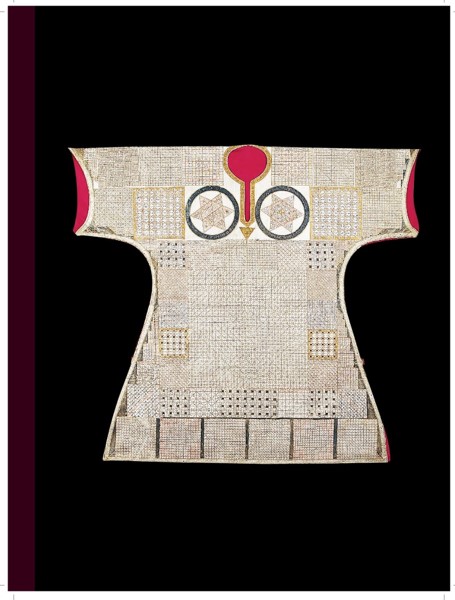
At a critical stage in this research, it became apparent that the same method of calculation was used in constructing both the Talismanic Shirts and the Yantras, and this started an examination pf the Talismanic Shirts in greater detail. The Talismanic Shirts that were examined at the Topkapi Palace Museum, as well as the research book by Art Historian Asst. Prof. Hülya Tezcan on Talismanic Shirts, among other sources led to important discoveries. It was evident that the Talismanic Shirts prepared by the astrologers (Muneceimbashi) of the Ottoman Sultans were prepared according to a tradition that went back to 2852 B.C., things began to get even more interesting.
The earliest known recorded Yantra was prepared as lines carved on rock and bronze by the Chinese Emperor Fu His in the form of Pa Kua 8 trigrams. When these pass through each other they make up the foundations of the magical power that provides protection against the positive forces of nature. It has been established by research that even before they converted to Islam, the Turks made use of Talismanic Shirts. The ancient Dede Korkut stories speak of protective shirts that are immune to lead and sword cuts or confer happiness. In ayah (verse) 93 of the 12th chapter, the Yusuf (Joseph) Sura, of the Koran Talismanic Shirts are mentioned. In the period of time when the prophet Joseph is Vizier of Egypt, there is a shirt that his fathers and brothers send him as a present. It mentions in ayah (verse) 96 of the 12th chapter of the Koran that when the prophet Joseph rubbed this shirt on his face the weeping of prolonged separation stopped and he opened his eyes.
One can conclude from all this that during the period of Turkish domination in India, this special teaching was developed as Hindu-Islamic cultural product and carried on to the Ottoman period to become part of the administration of the state. The four archangels, Michael, Gabriel, Rafael and Azrael, the 99 names of Allah (ʾasmāʾ allāh al-ḥusnā), and certain ayahs from the Koran frequently make their presence on these shirts. In addition, the phase of the moon, the astrologically propitious time and many other astrological symbols are frequently used on these shirts prepared according to the date and time of birth of the Sultan in question. Studies on this matter continue and are dealt with in detail in a subsequent book.
Example of a Yantra
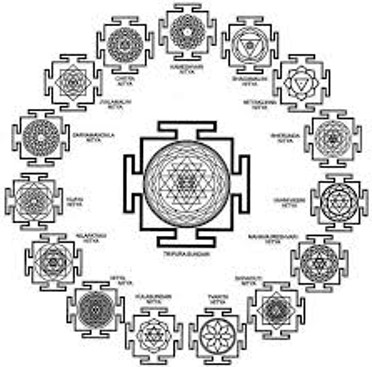
This one of the Talismanic Shirt was worn by the Ottoman Sultan, Suleiman the Magnificent under his armor at the Mohacs Battle and many other military confrontations. It was prepared by the head (or court) astrologer (Münecimbashi) according to his time of birth and contains the Al-Fath (Victory) Sura and other Suras of the Koran.
Similarity of the Talismanic Shirt and Yantras:
While there is no direct evidence that the designers of the shirt show are using Vedic yantra methodology in the constuction of the symbols on the shirt, there is an obvious commonality between the designs on the shirt and certain key yantras in used in the Vedic tradition.
For instance, the two interlocking triangles shown in the area near the chest show a superficial resemblance to the Surya Yantra (which is sometimes used in marriage ceremonies). The ascending and descending triangles represent the blending of male (Mars) and female (Yoni) energies-although not aligned in exactly the same way as the Surya, Dhumavati, or Anahata yantras which it superficially resembles. Such a yantra would, on the surface, at least, represent power and authority, and to a certain degree protection, because it is stabilized by standing on two points as opposed to balancing on one.
The rest of the shirt is reminiscent of the numerical squares found in both Vedic planetary yantras and Solomonic planetary sigils, and it is not beyond possibility that the maker was borrowing from both traditions. Such cross cultural borrowing or inspiration would be common in a center of culture such as the Ottoman Empire.
Also, if one looks carefully at the red downward point in the middle top of the shirt, it appears to be a an upside down lingam design, pointing towards what appears to be a yoni. The symbology is used to indicate potency, power, and protection and this would seem to be the purpose of this shirt.
Without further cross-cultural corroborating evidence, these combinations are speculative, but the similarities between the symbology of the two cultures is tantalizing and worthy of much deeper investigation.
Om Tat Sat

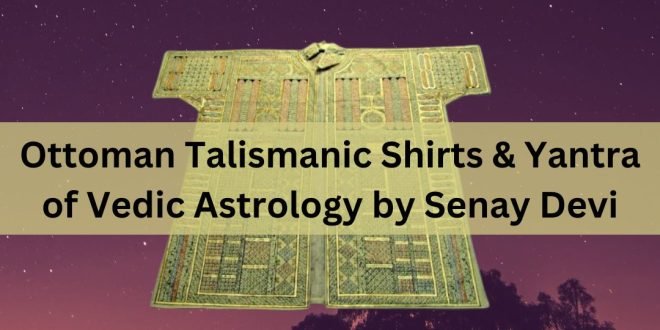


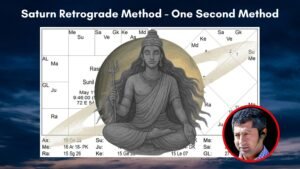
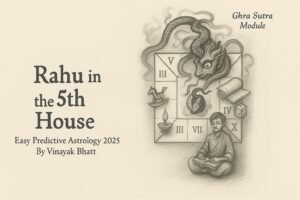




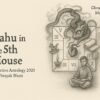


Leave a reply
You must be logged in to post a comment.